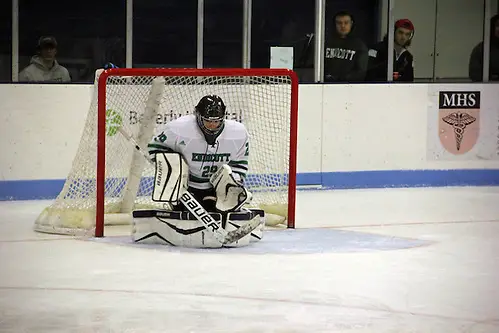
The Division III women’s tournament selection show takes place Monday morning, March 6, at 10 a.m. EST. The final public regional rankings came out on Tuesday. One more set of regional rankings will happen on March 5, but those will not be released to the public.
We’ve got the final set of conference tournament games this weekend, and there is plenty of possibility for an upset win. Whereas on the D-I side, we saw just one lower seed prevail here in D-III, with St. Thomas ousting Gustavus Adolphus, University of New England taking out Castleton, Bowdoin upsetting Hamilton, and Amherst toppling Trinity.
We can’t really predict how those games will play out, so for now, we’ll proceed on the information we do have and look at what we might see from the tournament selection.
I assume if you made your way here, you know a thing or two about how the D-III tournament works, but just in case — a quick primer.
Eight teams will be awarded bids to the 2017 tournament. Five conferences — ECAC West, MIAC, NEHC, NESCAC and NCHA — will receive an auto-bid for the winner of their conference tournament. The conferences eligible for an auto-bid need to have played with the same seven or more members for at least two years. Those are called Pool A bids.
The number of Pool B bids is determined by how many teams are currently playing and how many are playing in those Pool A conferences. It gets a little complicated, but just know that this year, a single Pool B bid is available and it goes to a team not in one of the Pool A conferences or an independent. This year, that means teams playing in the CHC, the WIAC, and Lebanon Valley and Northland.
That leaves two spots to be filled. Those at-large bids are called Pool C bids. These teams are chosen based on the same criteria used to ultimately seed the final eight teams, and that criteria — and how much each of them is weighed — is not public knowledge. Of all the factors used, the most volatile is the one that calculates results against ranked teams because it only takes into account teams ranked at the time of selection. Those constantly changing rankings can cause huge swings in a team’s possible eligibility and can ultimately make it difficult to figure out which teams will be rewarded those final two spots.
In the final public rankings, the East remains mostly unchanged, though Connecticut College was dropped from the final spot even though it won its NESCAC quarterfinal game convincingly. Utica moved into the sixth spot in those rankings with a win over Owego and a loss to Plattsburgh in the early rounds of the ECAC West tournament.
There were big shakeups in the West, with St. Thomas upsetting Gustavus Adolphus, the top seed in the MIAC. The Gusties are out of Pool A contention for NCAA selection and must now hope they can compare favorably and earn a Pool C bid. It’s going to be an uphill battle for Gustavus Adolphus, and their season may have ended at the hands of an overtime goal.
With the Gusties out of contention, Augsburg is the remaining top seed and presumptive bid-winner from the MIAC. St. Thomas has proven that the MIAC tournament is volatile and any team could grab the win — and the auto-bid — sending bracketology into a lot more uncertainty than it previously had been.
Adrian usurped Wisconsin-River Falls for the top spot, while Augsburg jumped up and Lake Forest moved down. Lake Forest suffers a bit from the loss to St. Scholastica, as the Forresters are no longer ranked. Though Lake Forest won the mini-game (that lasted three periods) to advance in the NCHA tournament, their position for the NCAA tournament is much more precarious.
If we work on the assumption that the top team in each division (or the highest-remaining team, in the case of the MIAC) will win their conference auto-bid, the first five teams into the tournament will be Plattsburgh, Augsburg, Adrian, Norwich, and Middlebury. We assume one Pool B spot will go to Wis.-River Falls, the no. 3 team in the country and the second-place team in the West in this final regional ranking.
I think we have to assume that Elmira, the next-highest ranked East team and the no. 5 team in the country, gets one of the Pool C bids, leaving just one spot left. And that’s where this weekend’s conference tournaments make things interesting.
The teams left on that final public regional ranking that have not received a bid are Endicott, Utica, Gustavus Adolphus, Wisconsin-Eau Claire, and Lake Forest.
Endicott has a solid case and would be the first team from the CHC to earn an NCAA bid. The way the rest of the teams line up in terms of win percentage, strength of schedule, and that elusive criteria about wins against ranked teams will determine that final spot.


